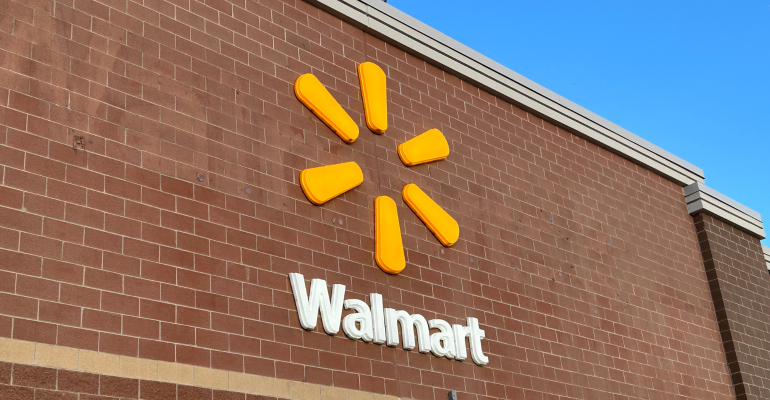Walmart, excluding Sam’s Club, captured 37% of the U.S. online grocery market during the second quarter of 2024, according to the latest data from the monthly Brick Meets Click/Mercatus Grocery Shopping Survey.
The Bentonville, Ark.-based retailer climbed 150 basis points year over year, and it comes at a time when the rest of the grocery market is losing ground. Supermarkets lost 250 basis points year over year, according to the survey.
Walmart’s ecommerce sales share began gaining on other grocers in early 2022 after the expiration of the expanded child tax credit and as food and home inflation began growing faster than wages.
“Walmart’s reputation for low prices helped to attract households that wanted both the convenience of shopping online and ways to save money in this market,” said David Bishop, partner at Brick Meets Click. “The execution of its omnichannel strategy, plus the operational efficiencies aided by incredibly high order demand has enabled Walmart to consistently deliver the type of experiences that customers expect and to lower its cost to serve online orders at the same time.”
Target finished Q2 with 7% of ecommerce sales thanks to strong execution on pickup orders.
Meanwhile, Walmart’s focus on building its first-party delivery business has produced notable shifts in how delivery and pickup sales fall between the mass retailer and supermarket formats which impacts profitability given the higher costs related to fulfilling delivery orders compared to pickup.
Overall, mass retailers captured nearly half of all delivery sales during the second quarter of 2024, driven by Walmart’s close to 8 percentage point jump in delivery share vs. Q2 2023.
Over the same time period, supermarkets went from leading mass retailers in delivery sales share by about a point to trailing by almost 10 points.
In the pickup sector, supermarkets ended the second quarter with about 28% of sales, as compared to mass retailers, which had some 58%. Mass retailers lost only 100 basis points of pickup sales year over year while supermarkets dropped 210 basis points.
Pickup continues to be the preferred method for ecommerce grocery sales in the U.S. with a 45.5% share, down 110 basis points year over year.
Breaking it down further, online orders at supermarkets still favor delivery, which accounted for 49.3% of orders during Q2 2024. Pickup, however, continues to gain order share (47.5% in Q2) as more supermarkets introduce the service.
The opposite trend is happening with the mass retailer order mix. The dominant method continues to be pickup (51.8% share) but there is a significant shift toward delivery.
Looking at repeat intent levels (segmented by format and receiving methods) indicates how Walmart’s strategic shift likely contributed to a stronger performance by the mass retailers.
The gap in repeat intent rates for delivery services between supermarkets and mass retailers expanded 120 basis points year over year, and mass retailers currently have an 11-point advantage over grocers. For pickup services, mass retailers are 15 basis points higher than grocers, but the gap narrowed by 60 basis points year over year.
The share of supermarket customers who also shopped with mass retailers during the second quarter rose 370 basis points, reaching more than 32% in 2Q 2024 with roughly one in five doing so with Walmart.
“Regional grocers can safeguard their online business by targeting budget-conscious households with a convenient, seamless, and personalized digital experience,” said Mark Fairhurst, chief growth officer at Mercatus. “This includes boosting loyalty with points, discounts, and exclusive deals, highlighting unique products and offering bundled deals for savings, and using targeted promotional campaigns to encourage repeat online purchases.”


